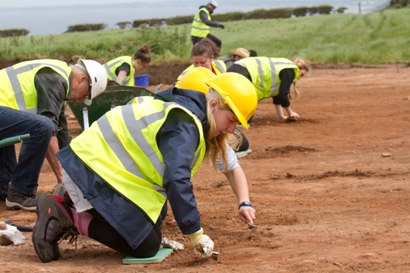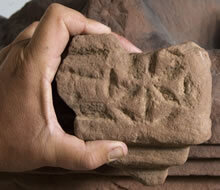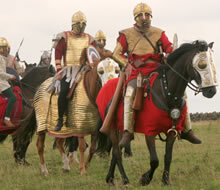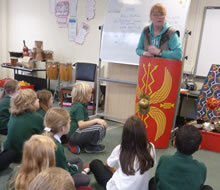 Volunteers and students working on site week 1Excavation at Senhouse Roman Museum
Volunteers and students working on site week 1Excavation at Senhouse Roman Museum
2015 Excavation
The Roman Temples Project, Maryport
2015 was the final year of a five year excavation programme
In 2013 the Roman Temples Project unearthed the north-westernmost classical temple known from the Roman world. Our work enabled us to reconstruct the appearance of this building, with its red sandstone walls, yellow sandstone decoration and grey slate roof, and columned entrance. The 2014 season allowed the team to complete their investigation of the building, including the section of collapsed wall recovered at its southern end.
The main focus of the 2015 season was to explore the area between the temples and the post holes where the altars were discovered in 1870. This was the final excavation season of the current project.
Investigation of both areas forms part of Senhouse Museum Trust's research agenda for Maryport. The site’s famous altars have long been understood to be an especially important source of material for Roman cult practice. The project aimed to determine the original context of these altars and in so doing to learn about the wider setting of ritual practices on Rome’s northern frontier. In order to achieve this aim, the team scrutinized not only the temple and the circular building nearby, but also the setting of these two elements within the wider landscape. Geophysical survey results suggest that these buildings may have been enclosed by a ditched enclosure and this feature were sampled during the 2015 season.
The excavation results were published in 2020, see A Cult Centre on Rome's North-west Frontier available from the museum shop.
The excavation was a collaboration between the Senhouse Museum Trust and Newcastle University. Access to the site was by kind permission from the North of England Civic Trust (now Cultura Trust).




